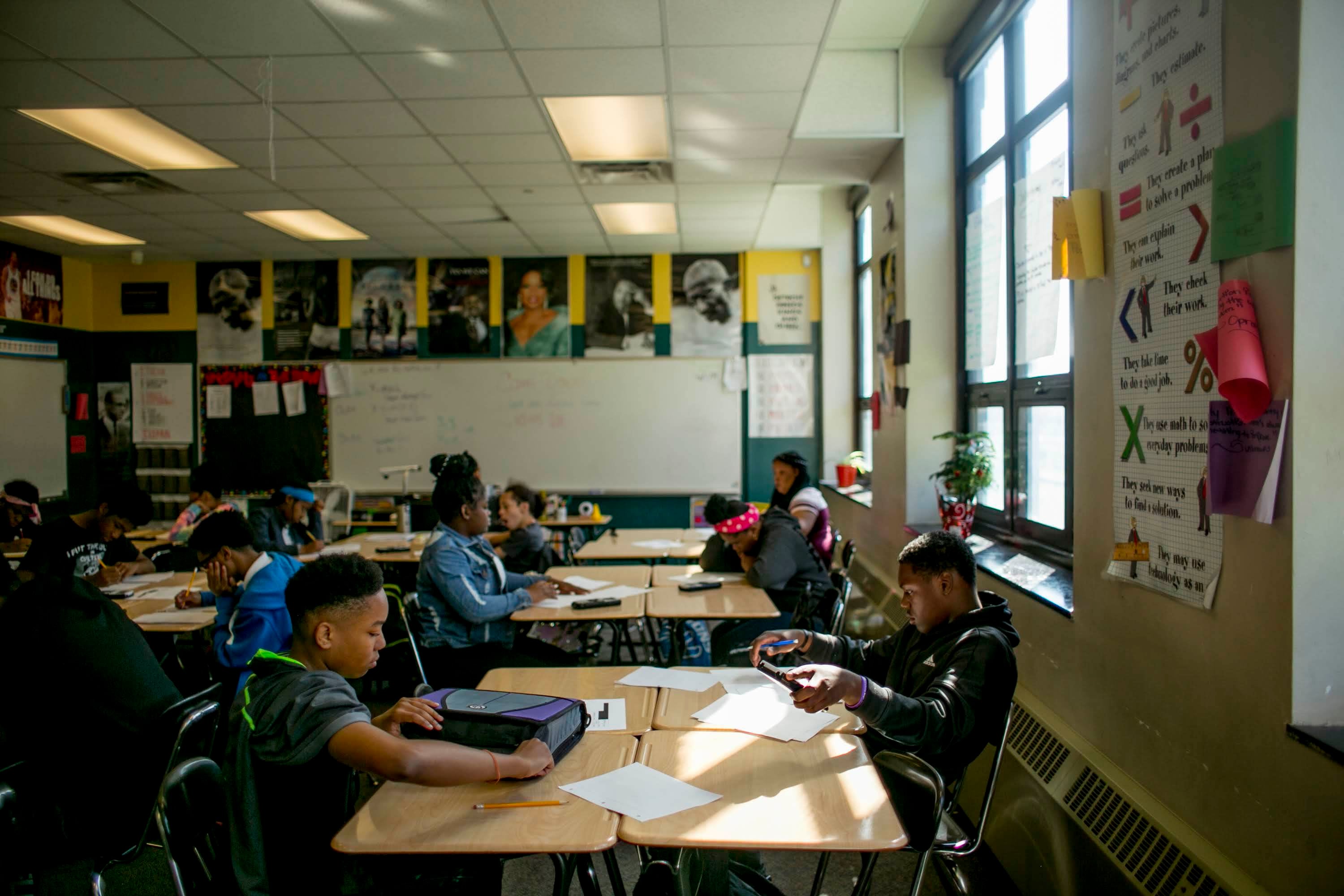Michigan lawmakers approved a landmark school spending bill Wednesday, but not before the Senate added another $300 million.
The Senate’s additions include scholarships for elementary reading support and incentives for districts that have year-round calendars with shorter, more frequent breaks.
The $17.1 billion spending plan passed both the House and Senate on near unanimous votes. The current year’s school budget is $15.5 billion.
“The bipartisan school aid bill makes historic investments in our children without raising taxes and will help each and every student thrive academically, mentally, and physically,” Gov. Gretchen Whitmer said. “I look forward to signing this legislation to expand the Great Start Readiness preschool program for 22,000 more children and connect more students to counselors, psychologists and nurses in their schools.”
The bill ensures equal base funding — $8,700 per student — across the state, a goal the Legislature has been working toward since 1994. This year the state provided $8,111 to $8,529 per student in base funding.
Districts operating on balanced year-round calendars will get a 3 percent boost in their foundational funding, bringing it to $8,961 per student. They will also be eligible for $75 million worth of onetime grants for capital improvements such as heating and air conditioning systems.
The budget “accomplishes one of our top priorities and goals we’ve been working for for decades — the elimination between the highest and lowest funded districts,” said Senate Appropriations Chairman Jim Stamas.
“Is there more work to be done? Yes. Are there more investments that people are asking for? Yes,” the Midland Republican said. “We can and will continue to review and work on these ideas.”
Kalamazoo Democrat Sean McCann said he was proud to vote yes on the Senate-amended budget.
“While today’s record-setting K-12 budget funding was a step in the right direction, we must ensure this record funding will be sustained,” he said.
School leaders are encouraged.
“As we move forward from here with no funding gap, we really hope lawmakers will come together to invest future money in need-based student aid,” said Bob Kefgen, director of government relations for the Michigan Association of Secondary School Principals.
“Calling it a transformational moment is an understatement,” Mark Greathead, superintendent of Woodhaven-Brownstown School District, told Bridge Michigan early this week about the impending school budget.
The 5,500 student district in southern Wayne County will see its per-pupil funding jump from $8,111 to $8,700, a $3.3 million boost. Closing the spending gap between highest and lowest funded districts is “a huge step toward funding stability” for public schools, Greathead said.
The extra state funds will allow the district to hire additional support staff to work with struggling students in elementary, middle, and high school.
With the extra funding comes additional responsibility, Greathead acknowledged. For years, Michigan school leaders have complained about poor and unequal funding, and have linked that funding to the state’s mediocre standardized test scores.
Now that schools have more money, “school districts need to do more than hope that scores go up,” he said. “We need to make sure we put in the programs and the support and the staff to make a difference.”
Some school leaders in Michigan have argued that equal doesn’t mean equitable.
“If you’re a student from a privileged background living in a household with college educated parents, you’re probably not going to need the same level of support that a student from an impoverished background would need to get to the same place,” Kefgen said.
That’s why there’s been a push in Michigan for a weighted funding formula that would provide extra money to educate students with disabilities, those who are learning English,and others who need more support. The state has made shifts in that direction in recent years with increased funding for students who are at risk of struggling in school. At risk is defined in a number of ways. It includes students from low-income homes, students who are chronically absent, students who are victims of abuse or neglect, and students with a family history of school failure.
More equal funding won’t close the yawning gap in local funding. Money raised through local taxes can make up a major part of a district’s budget — 30% or more — and can be used for things such as school building upkeep. But those funds are often out of reach in low-income communities because property values are low and there is less to tax. The result is that students in poorer and urban and rural areas often attend class in dilapidated buildings.
While federal poverty programs help, those dollars come with strings attached and can’t be used on school buildings.
The Senate also added a $155 million reading program. It provides up to $1,000 scholarships parents can use for in-person or virtual tutoring and instructional programs to help children in early elementary grades improve their reading. The program will be administered by Grand Valley State University, which expects to announce eligibility requirements in August.
The budget also increases spending on the Great Start Readiness Program by 40%. The $168.5 million infusion supports early education for 4-year-olds who are deemed at risk of educational failure.
School districts also will be able to hire more psychologists, social workers, counselors, and nurses. Lawmakers allocated $240 million in new money.
Staff writers Koby Levin and Lori Higgins contributed.







